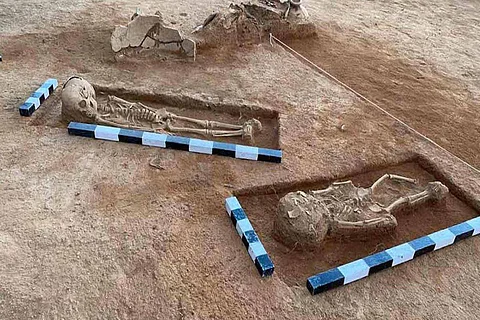

The seventh phase of excavation at Keezhadi and surrounding three villages -- Agaram, Kondhagai and Manalur will begin in the first week of February, as per a news report. The sixth phase of excavations ended in October 2020.
The State department of Archaeology confirmed that the excavations in these sites will continue to the next phase. The sixth phase of excavations on Keezhadi and the other villages began in February 2020 but was however interrupted for a couple of months due to the COVID-19 lockdown. In the sixth phase, human skeletons, precious stones and weighing measures were found below the earth. Ringwell structures, furnaces and utensils were also discovered during the sixth phase of exploration in Keezhadi. Apart from these, the sixth excavation also had artefacts that pointed to an industrial capability in the society that lived around 3000 years ago. The discovery of the artefacts also pointed out the possibility that the people who lived in the region around 3000 years ago had advanced knowledge on work, entertainment and clothing.
Deputy Director of Archaeology and in charge of the excavations R Sivanandam had earlier told TNM that the discovery of bangles in the region might be an indication of a bangle industry being present there in the past. “We have also found iron, more pottery, graffiti marks, and Brahmi script in the sites.”
\
Another path breaking finding in the sixth phase was the discovery of complete adult skeletons. These skeletons will be DNA analysed by a team from Madurai Kamaraj University. The aim of analysing the DNA of the skeletons is to assess how many mutations those genes have gone through to result in the people at present, thereby finding out the proportion of the current population related to the people who lived in Keezhadi years ago.
Smrithi Haricharan, Assistant Professor at National Institute of Advanced Studies had also told TNM in an earlier interview that finding complete skeletons in Keezhadi was indeed significant since it was common to find remains of secondary or ceremonial burials at excavation sites. “The boring question here is if it's connected to the Indus Valley civilisation or not. What did the people at Keezhadi do? How was their way of life? What did they eat, what kind of social segregation did they follow? These are some of the questions we should focus on,” she added.